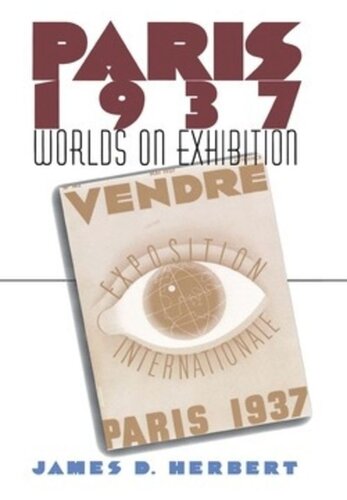

Most ebook files are in PDF format, so you can easily read them using various software such as Foxit Reader or directly on the Google Chrome browser.
Some ebook files are released by publishers in other formats such as .awz, .mobi, .epub, .fb2, etc. You may need to install specific software to read these formats on mobile/PC, such as Calibre.
Please read the tutorial at this link: https://ebookbell.com/faq
We offer FREE conversion to the popular formats you request; however, this may take some time. Therefore, right after payment, please email us, and we will try to provide the service as quickly as possible.
For some exceptional file formats or broken links (if any), please refrain from opening any disputes. Instead, email us first, and we will try to assist within a maximum of 6 hours.
EbookBell Team

5.0
90 reviewsThis elegant and theoretically informed book, illustrated with forty-five photographs, explores the cultural significance of six exhibitions or new museum installations, all opening in Paris between mid-1937 and early 1938: the commercially oriented world's fair titled L'Exposition Internationale des Art et Techniques; the historical Musée des Monuments Français; the ethnographic Musée de l'Homme; two massive art retrospectives, one sponsored by the state of France and the other by the municipality of Paris; and L'Exposition Internationale du Surréalisme.James D. Herbert capitalizes on the proximity of these disparate exhibits to show how they competed with and yet also complemented one another in visually rendering the full scope of human accomplishment through time and across the globe. In this task, Herbert argues, they both succeeded and failed in interesting and productive ways. He asserts that the exhibitions projected and, in a sense, created (created precisely through the act of projection) the real world that they ostensibly only represented.In fact, Herbert argues, the exhibitions developed a particular sense of French national identity—one that, in managing to be at the same moment both inwardly focused and beneficently expansive, would present a vivid contrast to the growing German nationalism of the Third Reich. His epilogue takes a final look at these issues from the perspective of Jean Cocteau's 1950 film Orphée. A ground-breaking work in cultural history, Paris 1937, with its insightful examination of objects from a variety of fields, is a pioneering text in the field of visual studies.